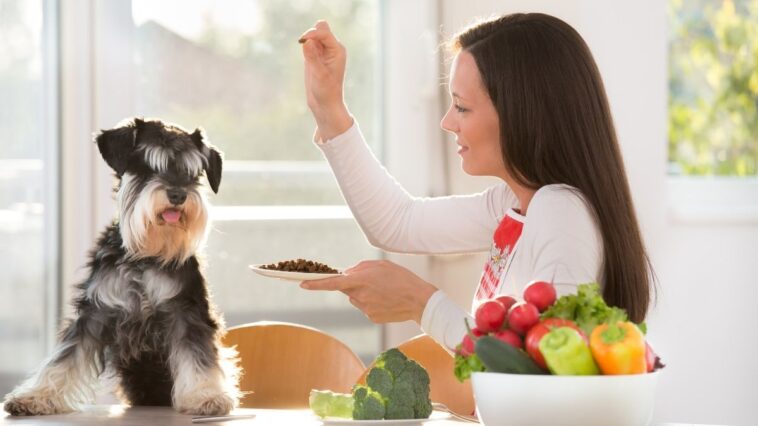Which dog food is best? We’ve all given into temptation on behalf of a pet before. You see those big, friendly eyes pleading with you as you set the dinner table or make lunch, and it’s hard to resist. We’re talking about your best friend here. So, you slip the Good Boy an illicit treat. You know it’s bad for his health, but what’s the worst that can happen?
The honest answer depends on what you give him. Like people, dogs, can have severe intolerances to certain types of food. Without a basic awareness of what these foods are – which not many of us have – feeding pet food from your plate can be dangerous. It’s why, today, we’re discussing the foods dogs can’t eat.
Some of the prohibited foods on our list may surprise you. If you’ve given your dog any of these in the past, don’t feel guilty. We must show our pets love and invite them to be a part of our lives and experiences. We’ve just got to make sure that we’re choosing the right moments and experiences when we do.
This is our guide to all the foods you should never feed a dog. We’ll provide a brief explanation for why each must be taken off your pet’s menu.
Food Dogs Can’t Eat
Xylitol
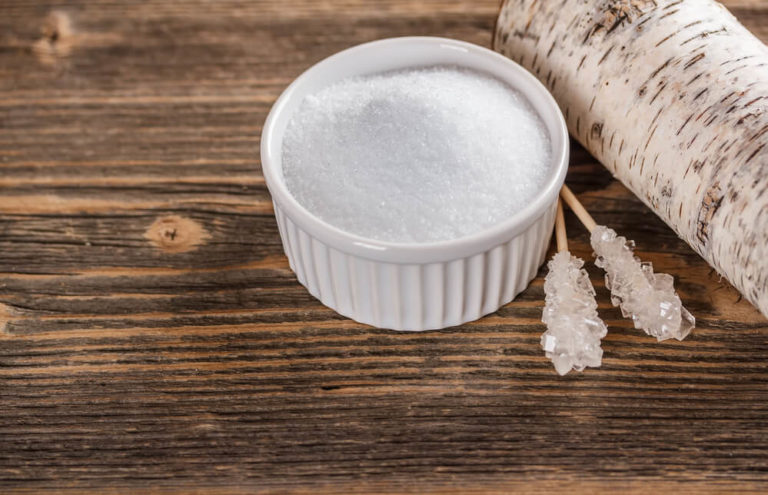
Xylitol is a chemical compound that mimics sugar’s flavor and is sometimes used as a low-calorie diet aid. It is commonly found in chewing gums, toothpaste, and some types of candy. For dogs, xylitol poses a serious risk because it causes blood sugar levels to drop rapidly. Vomiting, extreme fatigue, problems with movement, and even seizures may follow. The gravest consequence is liver failure, so it’s essential to keep your pet away from any foods which might contain xylitol.
Avocado
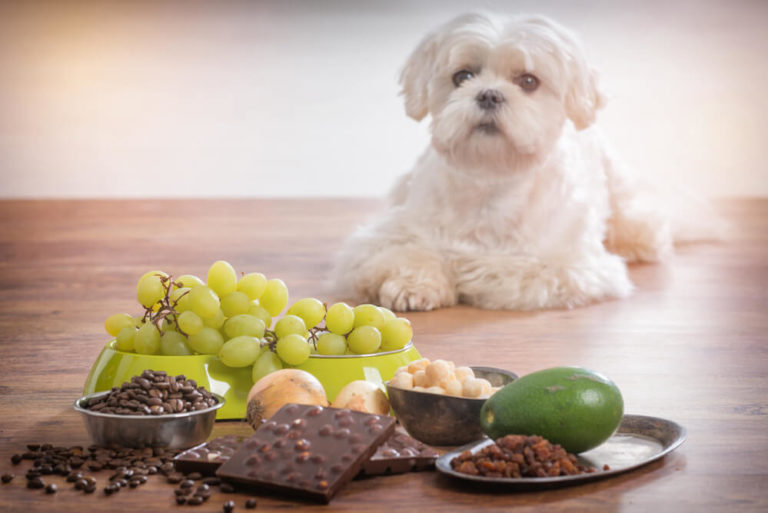
Sorry to be the bearer of bad news, but avocado isn’t a good treat for dogs. While it’s true that some animals can tolerate it better than others, the health risks mean avocado shouldn’t be given even as an occasional indulgence. It contains a substance called persin, which induces vomiting and diarrhea in sensitive animals. If your dog gets hold of a small amount of avocado and seems fine, he probably will be. However, it’s essential to keep him well away from it in the future to avoid severe allergic reactions.
Alcohol

While it’s not uncommon to hear of pet dogs drinking beer, it’s ill-advised. Though not a food, alcohol is on our list of foods dogs can’t eat because we want to stress how serious the consequences can be. Alcohol is, essentially, a type of slow-acting poison, whether you’re a human or an animal. It’s incredibly poisonous for dogs because of their smaller size. Just half a glass of beer, wine, or liquor can cause vomiting, diarrhea, and breathing difficulties that end in death.
Onions and Garlic
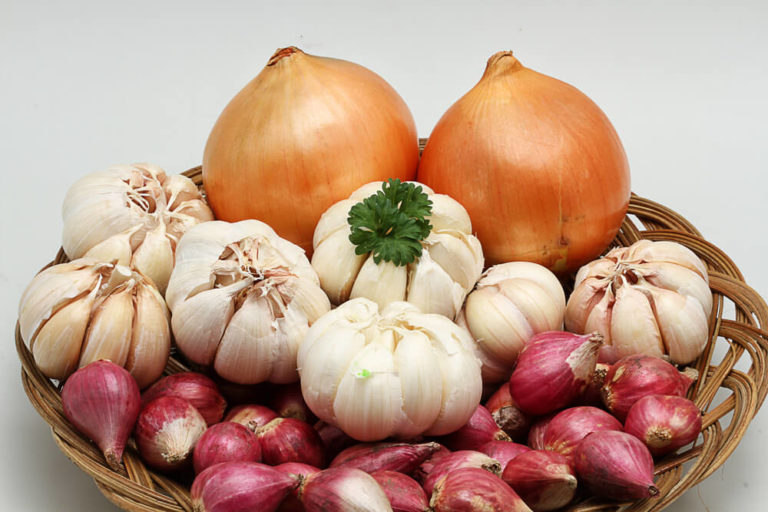
You may have fed your dog onions and garlic on several occasions without realizing it. Both are ubiquitous foods that are found in thousands of our favorite savory products. This is why it’s important to check ingredient lists before giving a pet food from your plate. Onions and garlic, in any form, can damage a dog’s red blood cells. In large enough quantities, the result may be severe anemia and respiratory problems.
Raisins and Grapes
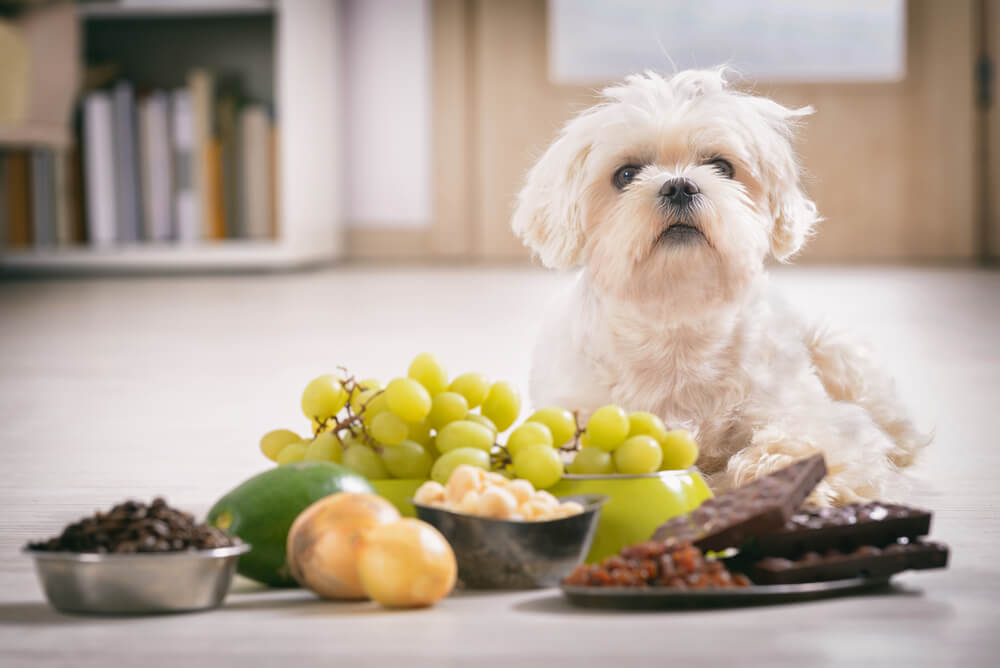
Though grapes and raisins may seem like a healthy treat, they’re not good choices for animals. For starters, they contain too much sugar for sensitive stomachs. They can also cause kidney failure and vomiting. Just a few grapes are enough to make a dog very sick for an entire day. If you want to reward your Good Boy, give him one of the fruits we know is compatible with his stomachs, like oranges or bananas.
Chocolate

Of all the dangerous foods for dogs, chocolate is the one most of us are aware of and supervise access to in our homes. Most people know chocolate can cause serious illness in dogs. The offending substance is theobromide, which, in large enough quantities, can lead to vomiting, diarrhea, tremors, seizures, and eventually, death. Theobromide is in all types of chocolate, including dark versions and unsweetened baking chocolate.
Dairy Products
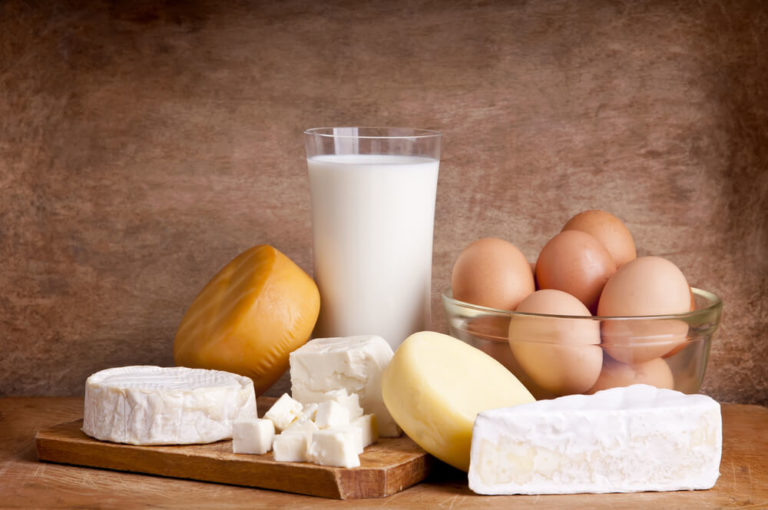
Dairy products like milk pose less risk of fatal sickness, but they’re still unsuitable for canine stomachs. Most dogs are naturally intolerant of lactose (just like some people). If they ingest it, their digestive system may become irritated and inflamed, and they may experience nausea, cramping, diarrhea, and general discomfort. In some cases, dairy gives dogs an uncontrollable skin itch.
Macadamia Nuts
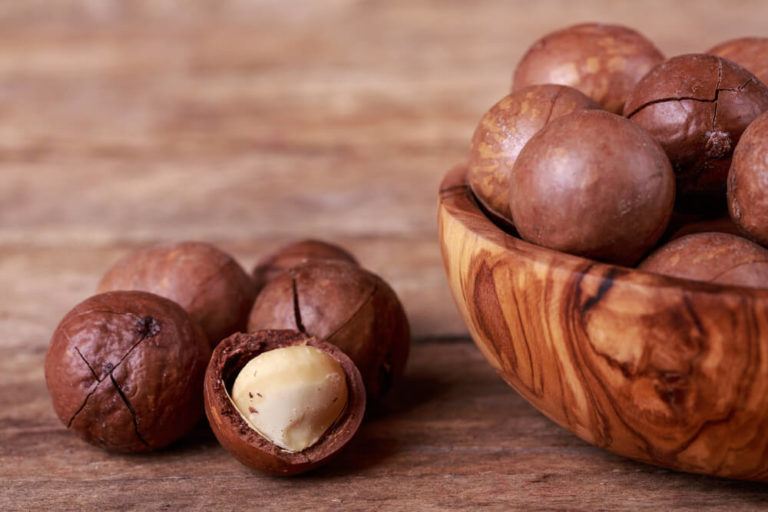
Fortunately, there are not many products that contain large amounts of macadamia nut. Nevertheless, you should still check ingredient lists to ensure before feeding any ‘human’ foods to your dog. It only takes six or more macadamia nuts to cause severe vomiting, dangerously high temperatures, and muscle spasms. If your dog eats macadamia nuts and develops movement problems in his back legs, take him to a vet right away.
Bones and Meat Scraps
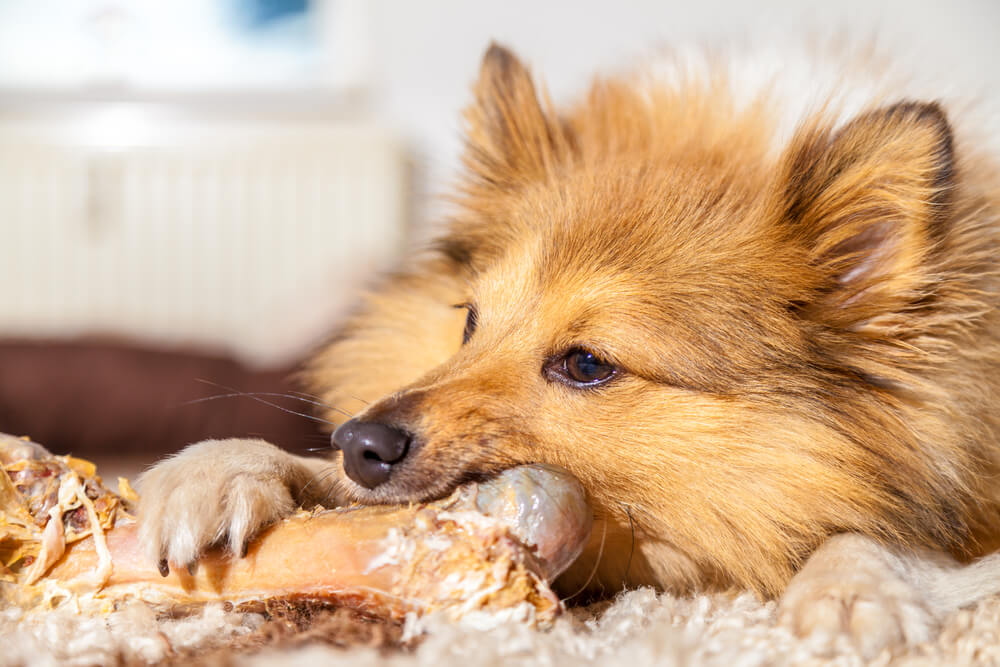
It’s always better to pick up bones from a local pet store where you know they’ve been scrutinized and approved as safe. It’s tempting to give your dog meat scraps and bones as you cook in the kitchen, but vets advise against it. The pet bones in the store have been checked for size to ensure they’re not a choking hazard. Any sharp splinters have been shaved off. Bones from the pet store are safe, bones from your kitchen less so.
Peaches and Plums

You may not know this, but peaches and plums contain small amounts of cyanide. It’s not harmful to humans because the volume is so low, and we don’t eat those hard, stony bits of the fruit anyway. Without thumbs to peel and pluck them out, dogs have no choice but to gobble up the whole fruit. This can lead to vomiting, stomach pains, and intestinal blockages in rare cases.
Raw Egg

Despite the growing popularity of ‘raw food’ diets, vets still advise against giving dogs raw eggs. The risks posed are the same as those for humans. If salmonella is present on eggs and they’re left uncooked, bacteria then has a chance to thrive in your pet’s stomach. They may get a severe case of food poisoning, and nobody wants that for their dog.
Raw Meat and Fish

Similarly, though often treated as a staple for Good Boys, raw meat and fish is not a very healthy treat. There’s nothing in the flesh of the animal to cause poisoning. Dogs aren’t intolerant of raw meat. However, like humans, they can get sick if they eat raw meat that’s infected with bacteria or parasites. Heat kills any nasties that want to enter your dog’s stomach, so try to resist the urge to give him a steak without cooking it first.
Bread Dough

This is an unusual one to reference in some ways, but we know dogs don’t discriminate. If it’s on the counter and unattended, they’ll have a little sniff and possibly even grab it while you’re not looking. So, be aware that bread dough containing yeast is a risk to pets. If a dog eats yeast, it’s going to do the same thing in their stomach as it does outside it rise. The consequence is a lot of stomach pain and a very unhappy pet.
Salty Foods
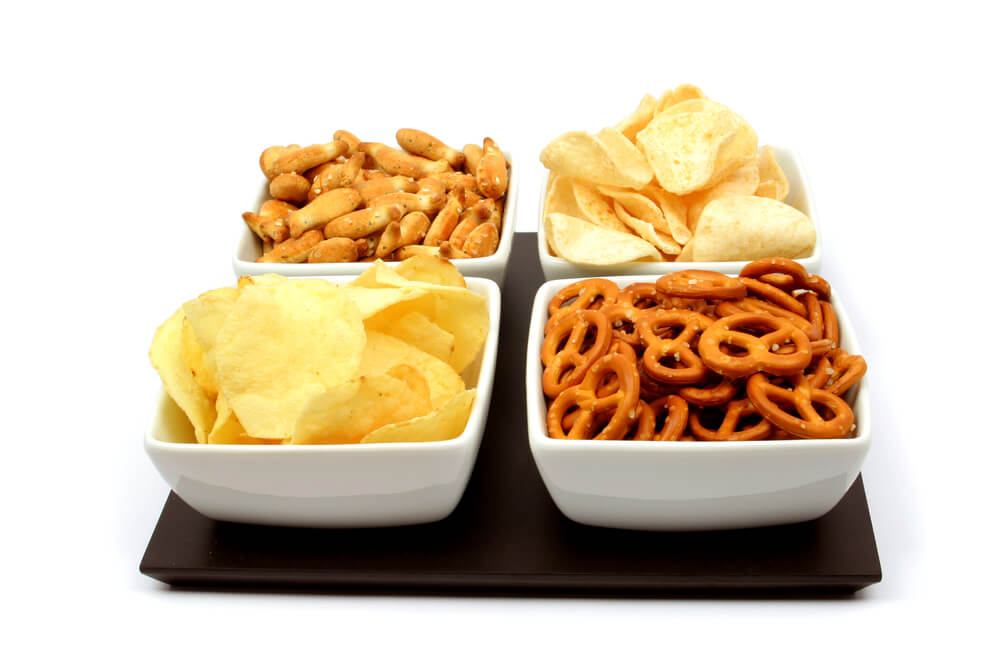
It would help if you didn’t feed a dog intensely salty snacks. If you know they’re bad for your health, you can be sure they’re not suitable for your pet. Salty foods like chips or pretzels can cause severe dehydration. Don’t forget, the dehydrating effects these foods have on your body are tenfold for an animal. The more they eat, the more thirsty they become. They drink more, they pee more, they develop sodium ion poisoning. It’s not pretty.
Sugary Foods

The same rules apply to sugary foods. You know what consuming too much sugar does to your body. Now apply that to an animal half your size. The same amount of candy or soda that’s tolerable for you in the short term (in the long term, it causes disease for humans, too) makes a dog sick much sooner. Sugar-rich diets for dogs lead to tooth decay, weight problems, and diabetes.
Special Mention: Medicines

Under no circumstances should dogs ever be given medications prescribed to humans. There’s no good reason for it to happen. Many medications contain highly toxic substances, and the potential for sickness and death is very high. Treat medicine cabinets as any parent would and take steps to prohibit your dog from getting inside.
Special Mention: Kitchen Pantry

Similarly, dogs shouldn’t be allowed to nose around kitchen pantries or store cupboards, mainly where herbs and spices are kept. Lots of different spices are toxic to dogs. For example, nutmeg can cause severe reactions, and so can baking soda. Whenever possible, store seasonings and other cooking products up high and away from curious paws.
What Foods Can I Give to My Dog As a Treat?
There are many foods you cannot safely enjoy alongside your pooch, but there are plenty of others you can give as a treat. ‘Human’ food in all forms is best kept to a minimum for the simple reason it’s not designed for animal stomachs. Occasional ‘human’ treats are fine, provided they don’t contain any of the substances listed above.
Can Dogs Eat Watermelon?
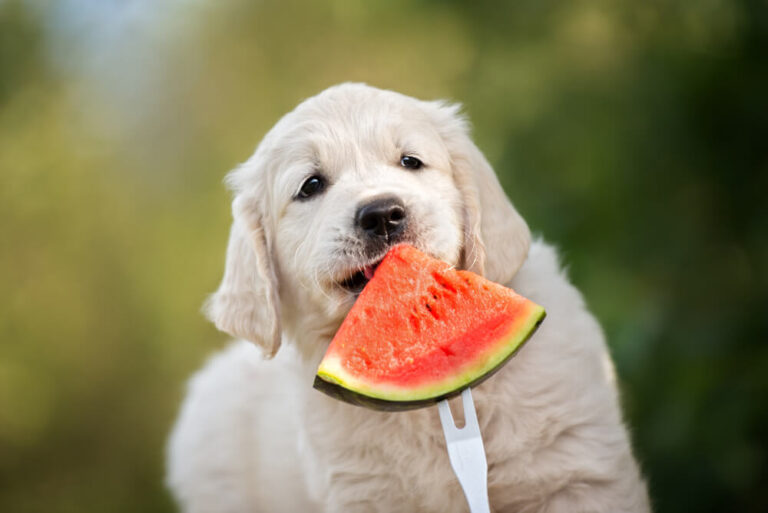
Yes, watermelon is a safe food for dogs to eat. Though not all, most fresh fruits are mainly nutritious and even beneficial for a pet’s health. Take care to remove the seeds, stems, and leaves before serving. Oranges, bananas, and apples can be a fun snack when sliced and rewarded for good behavior.
Can Dogs Eat Potatoes?

Vets advise against giving raw potatoes to dogs, but they have no issues feeding them cooked potatoes. They should be a rare treat, in any case. Don’t forget that the starch content is exceptionally high. Make sure there are no overly fatty toppings or ingredients like butter. If you’re giving potatoes as a treat, they should be unseasoned.
Can Dogs Eat Cooked Meat?
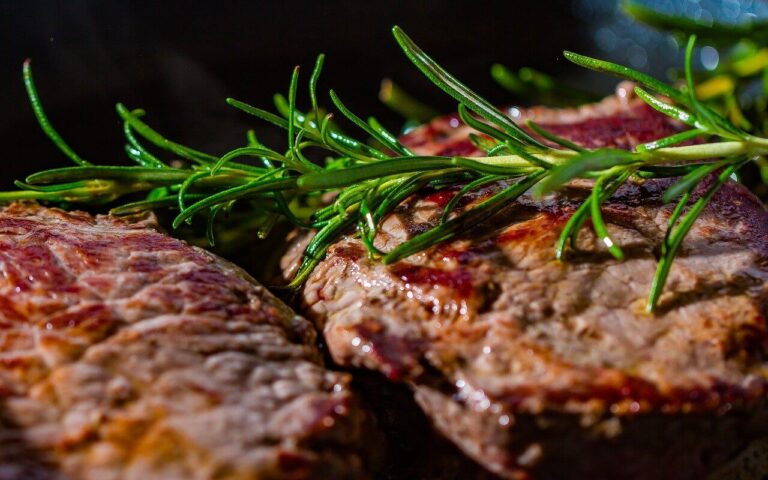
When cooked, most meats are highly nutritious and very safe for dogs to eat. It’s best to remove bones before serving to remove the risk of bone splintering in the mouth. This is particularly important when it comes to chicken. Dogs should never be given chicken bones because they splinter very quickly and damage the throat. The flesh and the chicken skin are both fine to serve.
What To Do If Your Dog Gets Sick
Sometimes, the worst does happen, and a pet gets into a place it shouldn’t be. Even the most attentive doggy parent can’t keep their eyes on a pup twenty-four hours a day. If you suspect your dog has consumed dangerous food, call a vet.
Describe what has happened or what you think may have happened in as much detail as possible. Describe any symptoms your dog is experiencing. The vet will be able to tell you whether emergency treatment is required.
In some cases, a dog won’t be in danger but may have to endure an uncomfortable night or two. Provide them with lots of drinking water, somewhere quiet to sleep, and access to an indoor toilet if possible.


